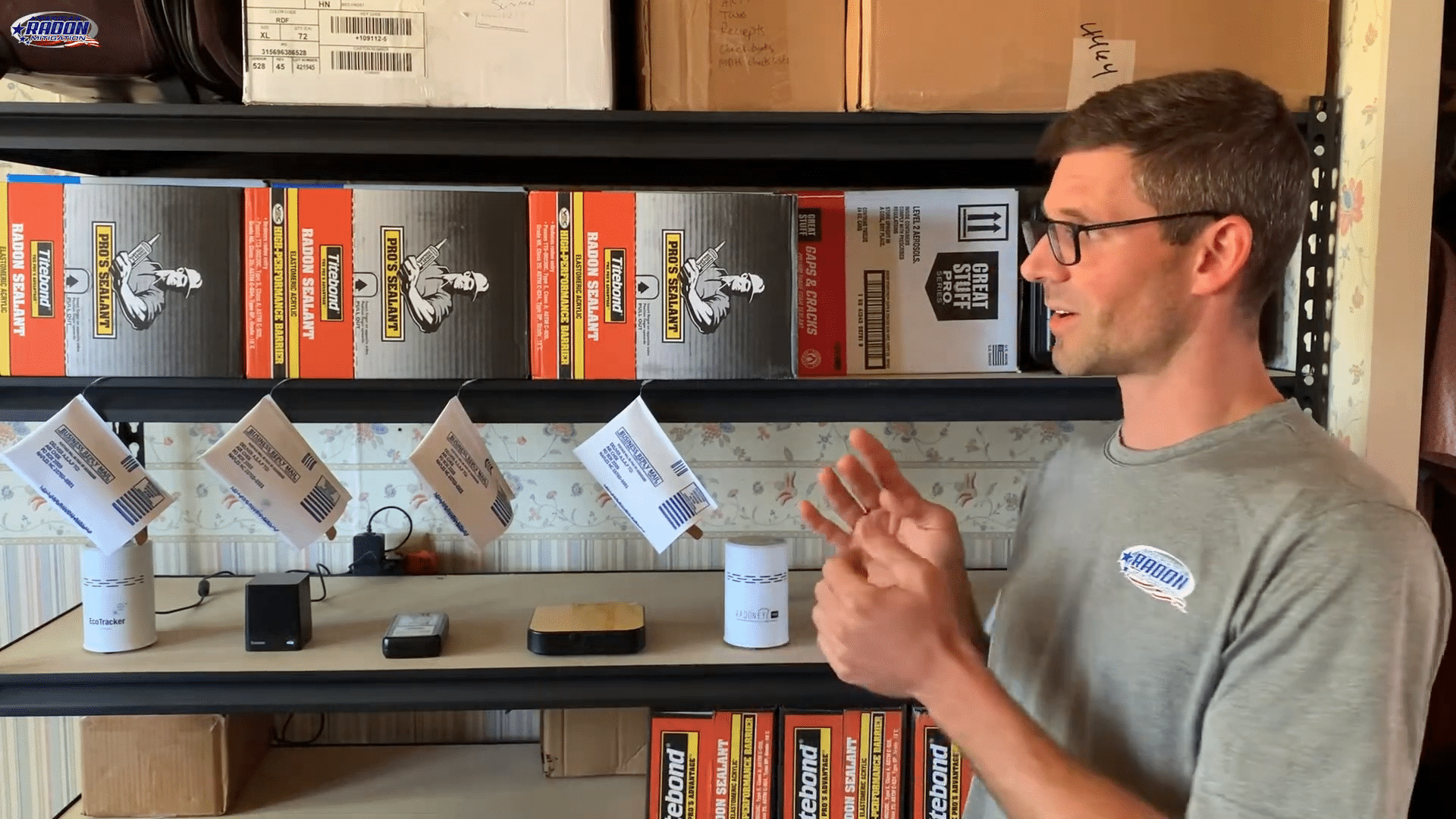Evaluating the Accuracy of Radon Testing Devices: Insights and Recommendations
Home » Health & Safety »
Understanding Radon Testing and Test Kits
Hello, I’m Jesse with American Radon Mitigation. We often receive inquiries about the reliability and accuracy of radon testing methods, particularly concerning radon test kits and monitors. Many homeowners are curious whether these tests can be trusted, when it’s appropriate to engage a professional for radon testing, and the effectiveness of consumer-grade radon monitors. In an effort to provide clear answers, we conducted an experiment comparing various radon testing devices.
Experiment Setup: Comparing Radon Testing Devices
For our experiment, we utilized a variety of radon testing devices positioned approximately four inches apart to assess their accuracy. Among the devices tested were the RadonEye Pro and Airthings Pro, both professional continuous radon monitors (CRMs) that require annual calibration. We also included consumer-friendly digital radon monitors like the Airthings Home and the EcoQube by Ecosense. Additionally, the EcoTracker, which is used primarily by mitigators to detect radon hotspots, was part of the setup. Finally, we used Air Chek short-term radon test kits, commonly deployed post-mitigation to confirm radon levels are under control.
Diverse Range of Testing Devices
The devices we tested offer a range of applications and technologies. Professional CRMs like the RadonEye Pro and Airthings Pro are known for their precision and are a standard in professional radon testing. On the consumer side, digital radon monitors provide homeowners with the convenience of ongoing monitoring. The Air Chek kits, which are sent to a lab for analysis after a short testing period, represent a more traditional method of radon testing. Each of these methods has its own advantages and ideal use scenarios.
Conducting the Test and Gathering Data
Our test was conducted in a residence where a radon mitigation system had been installed approximately six months prior, maintaining radon levels below 1 pCi/L. Measuring lower concentrations of radon poses a challenge due to the minimal radon presence, making this setup an ideal environment to test the sensitivity and accuracy of our selected devices. During the experiment, we also aimed to assess the impact of transit time to the lab on the accuracy of the Air Chek test kits by setting up multiple kits to be sent at different times.
Analysis and Results
The results from this testing ranged between 0.3 to 0.9 picocuries, with the professional monitors showing readings at around 0.6 picocuries. These results were within the expected margin of error, confirming that all tested devices provided acceptable accuracy. Notably, the similar readings across a diverse set of devices reiterate that both professional and consumer radon tests can be reliable; however, the choice of device should be aligned with the specific needs and context of the testing scenario.
Consumer-Grade Monitors and Mitigation Decisions
It’s important to highlight that while consumer-grade radon monitors offer a convenient way to continually track radon levels, they should not be solely relied upon for making mitigation decisions. For homeowners looking to take action based on radon test results, confirming the readings with a professional test or an EPA-approved kit is advised. These steps ensure that mitigation decisions are based on the most accurate data available, safeguarding health and home safety.
Choosing the Right Radon Test for Your Needs
Choosing the correct radon testing method can be crucial in ensuring the safety of your indoor environment. If you’re a homeowner monitoring radon post-mitigation, short-term test kits or consumer-grade monitors might suffice for regular check-ups. However, for initial testing or in situations requiring precise data to guide mitigation actions, professional testing with calibrated equipment is recommended. Remember, the goal of radon testing is not just to detect the presence of radon but to determine whether mitigation measures are necessary and effective.
In conclusion, radon testing is a critical aspect of maintaining indoor air quality and health safety. Whether opting for a DIY test kit or a professional assessment, understanding the capabilities and limitations of each approach ensures that you can make informed decisions about radon exposure in your home. If you have any further questions about radon testing methods or wish to share your experiences with various devices, feel free to leave a comment or reach out for more detailed information. Thank you for your interest in ensuring a safer living environment.




